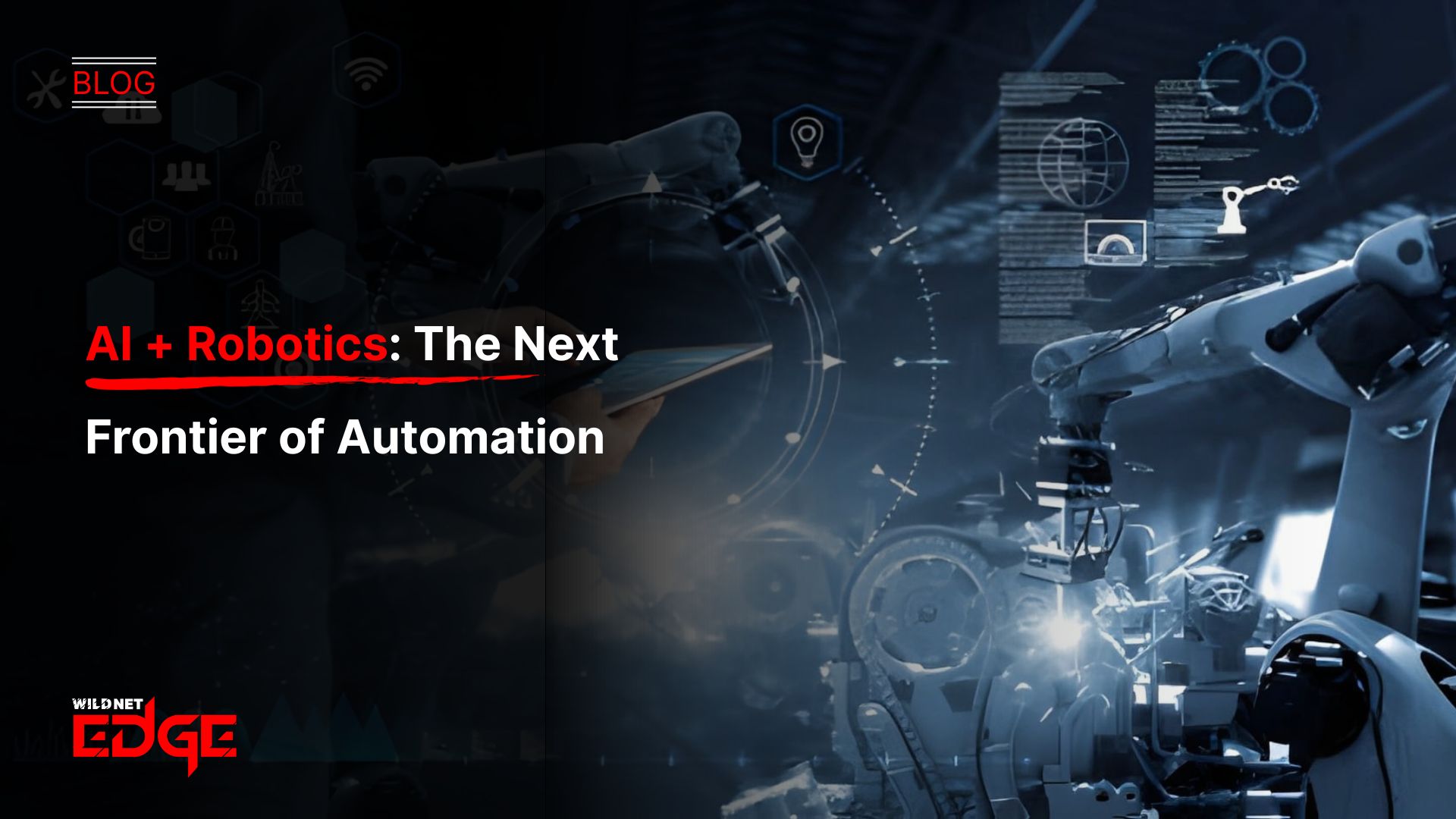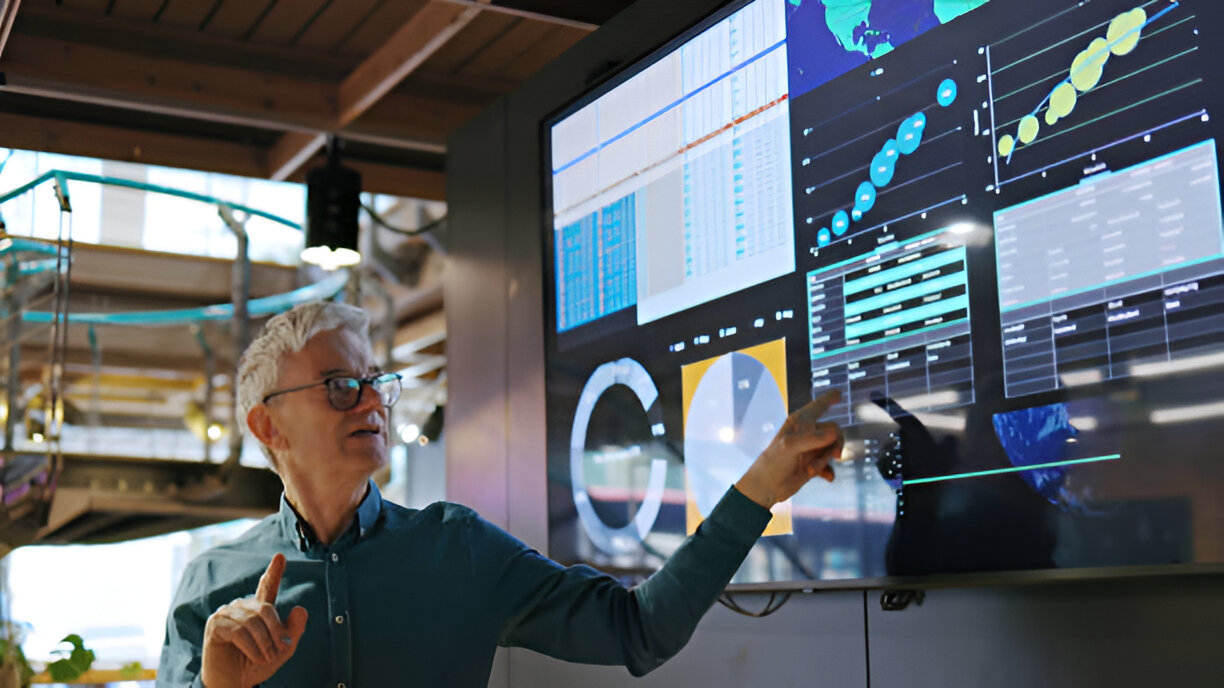TL;DR
This article explores the power of AI robotics innovation—the fusion of artificial intelligence and robotics. While traditional robots automated routine tasks, AI gives them the ability to see, learn, and adapt. Key technologies like computer vision and machine learning are driving industrial AI solutions in manufacturing and logistics, boosting efficiency and precision. Mastering this deep tech innovation is now a strategic necessity for businesses aiming to stay competitive through intelligent automation.
For decades, robots have been a cornerstone of industrial efficiency. They have been strong, fast, and precise, but also fundamentally “dumb”—limited to executing the exact repetitive task they were programmed for in a highly controlled environment. Today, that is changing. The convergence of artificial intelligence with advanced robotics is creating an entirely new class of machines: autonomous systems that can see, learn, and interact with the physical world in real-time. This AI robotics innovation is the true next frontier of automation, moving us from simple automation to genuine autonomy.
What is AI Robotics Innovation?
Traditional robotics is about automation: programming a machine to perform a specific sequence of motions e.g., “weld point A to point B”. AI robotics innovation, in contrast, is about autonomy: building systems that can perceive their environment, make decisions, and take appropriate actions to achieve a goal, even in an unpredictable setting.
AI provides the “brain” to function intelligently. This shift from pre-programmed repetition to data-driven adaptation is the key differentiator. It’s the difference between a robotic arm on an assembly line and a self-driving vehicle navigating a city street. This is the new wave of robotics automation AI. A specialized AI automation development partner can help bridge this gap, creating systems that think and act.
Why This Convergence is a Game-Changer
AI and robotics are two technologies that together offer enormous strategic value through the fusion of their capabilities that could never be achieved separately.
- From Automation to Autonomy: AI-driven robots are not restricted to dull and monotonous tasks in factories. They can train themselves with the help of machine learning and even adapt their skills to slight differences in the surroundings. Consequently, they can take on difficult jobs such as sorting mixed objects or moving around the floor of a factory that is busy.
- Higher Accuracy and Efficiency: Human-like vision is granted to robots through the use of AI in conjunction with computer vision. As a result, they can perform very difficult and delicate operations such as surgery, microelectronic assembly, or industrial AI quality control identifying defects in the process.
- Reduced Risk: The cost of processing AI robotics innovation is that we can take away from human workers’ lives or locations with a physical demand that goes beyond their capabilities. Besides that, robots may be used for inspecting critical infrastructures, handling dangerous materials, and other tasks where human presence is not allowed; thus, they would help reduce the rate of workplace accidents and even save human lives.
AI Technologies Powering Modern Robotics
Several key AI disciplines work together to make autonomous robots a reality.
Computer Vision (The “Eyes”)
Computer vision is arguably the most critical AI technology for robotics. It gives machines the ability to interpret and understand the visual world. In robotics, this is used for:
- Object Recognition: Identifying and classifying objects (e.g., “this is a product,” “this is a person”).
- Navigation (SLAM): Simultaneous Localization and Mapping (SLAM) allows a robot to build a map of its environment while simultaneously keeping track of its own position within it.
- Quality Control: Visually inspecting products on an assembly line for microscopic defects.
Machine Learning (The “Brain”)
Machine learning (ML) gives robots the ability to learn and improve without being explicitly programmed for every scenario.
- Reinforcement Learning: Robots can learn complex tasks (like how to grip an unfamiliar object) through trial and error in a simulation, then apply that learning to the real world.
- Predictive Analytics: ML models can analyze sensor data from a robot to predict when it might fail, enabling predictive maintenance.
These complex AI models require a robust backend, often relying on scalable cloud & DevOps solutions to process the vast amounts of data generated.
Natural Language Processing
NLP allows humans to interact with robots using natural language. This is crucial for collaborative robots (“cobots”) that work alongside humans, enabling operators to give simple voice commands instead of writing complex code.
Real-World Applications of Industrial AI
Though consumer robotics occupy a major space in discussions, the industrial and business segments are where AI robotic innovations are delivering the greatest benefits today.
Advanced Manufacturing
Industrial AI is taking over the manufacturing process. Robots with computer vision are capable of doing “bin picking” (a highly complicated job of recognizing and taking specific parts from a messy bin). They can also be a part of the human-operated assembly line, with their actions synchronized with the human worker’s speed via automatic adjustment.
Logistics and Warehousing
The rapid expansion of eCommerce has led to a huge demand for robots combined with automation AI. The state-of-the-art warehouses have got hold of Autonomous Mobile Robots (AMRs) that roam around the entire floor for goods delivery, and robots that can sort out the packages at a speed even faster than that of humans. Such AI robotics breakthrough has already become a necessity for retaining up-to-date standards of fulfillment.
Healthcare and Surgery
AI is boosting surgical robots’ accuracy . By interpreting pre-operative imaging and supplying real-time advice, AI can give the operative the chance to be fully accurate during a minimally invasive operation. Robotic exoskeletons are another way technology aids patients in walking again.
The Role of Robotics Software and Integration
A robot is only as smart as its software. The underlying robotics software (like the Robot Operating System, or ROS) is incredibly complex, acting as the middleware that connects the AI “brain” to the robot’s motors and sensors. This software must be robust, secure, and reliable.
Building and managing this robotics software is a highly specialized skill. It involves creating the control logic, managing real-time data flows, and ensuring the robot can operate safely. This often requires custom development, which is why many companies seek out expert robotics app development services.
Case Studies in AI Robotics Innovation
Case Study 1: AI-Powered Warehouse Automation Boosts Efficiency
- The Challenge: A large eCommerce fulfillment center was struggling to meet its “next-day delivery” promises due to labor shortages and inefficiencies in its manual package sorting process.
- Our Solution: We helped them deploy a fleet of AMRs for “goods-to-person” picking and integrated AI-powered robotic arms with computer vision for the sorting line. This complex integration required specialized AI integration services.
- The Result: The center increased its order fulfillment capacity by 300% while reducing sorting errors by 98%. The robotics automation AI solution allowed them to scale their operations and meet peak season demand without a proportional increase in labor costs.
Case Study 2: Computer Vision Transforms Manufacturing Quality Control
- The Challenge: An automotive parts manufacturer was experiencing a high defect rate due to microscopic cracks that were difficult for human inspectors to spot consistently.
- Our Solution: We implemented an industrial AI solution by mounting high-speed cameras over the assembly line, feeding video into a custom-trained computer vision model. The model identified and flagged defective parts in real-time.
- The Result: The system achieved a 99.9% defect detection accuracy. This AI robotics innovation saved the company millions in warranty claims and waste, and the robust robotics software provided a detailed log of all defects for process improvement.
Our Technology Stack for AI Robotics
Building intelligent robotics requires a specialized, high-performance stack.
- AI & Machine Learning: Python, TensorFlow, PyTorch, OpenCV (for Computer Vision)
- Robotics Frameworks: Robot Operating System (ROS 1 & 2)
- Simulation: NVIDIA Isaac Sim, Gazebo
- Cloud & DevOps: AWS (RoboMaker, IoT Greengrass), Azure IoT, Kubernetes
- Hardware: NVIDIA Jetson, Raspberry Pi, Various LIDAR/Camera sensors
Conclusion
AI robotics innovation is not just an incremental upgrade; it represents a fundamental paradigm shift. The fusion of AI’s intelligence with a robot’s physical capabilities is creating autonomous systems that are more efficient, adaptable, and safer than ever before. For businesses in manufacturing, logistics, healthcare, and beyond, embracing this deep tech technology is the key to building a resilient and competitive future operation.
Ready to harness the power of intelligent automation? At Wildnet Edge, our AI-first approach is at the heart of our development process. We partner with you to build sophisticated industrial AI solutions and robust robotics software, turning your vision of AI robotics innovation into a tangible, powerful reality.
FAQs
A simple automated arm (like in a traditional car factory) performs a pre-programmed, repetitive motion. It has no awareness of its surroundings. An AI-powered robot uses sensors (like cameras) to perceive its environment, make decisions (e.g., “this is the correct part to pick up”), and adapt its actions.
The biggest challenge is often integration. Getting the complex AI models, the robotics software, and the physical hardware to communicate and work together seamlessly in a real-world, unpredictable environment is a significant engineering feat.
It is essential for any robotic task that requires navigation, interaction with objects, or quality inspection. For simpler, “blind” tasks (like a robotic arm that only needs to move between two known points), it may not be necessary, but computer vision is the key enabler for true autonomy.
ROI can be measured in several ways:
* Efficiency: Increased throughput, faster cycle times.
* Cost Savings: Reduced labor costs, lower error/defect rates, less waste.
* Safety: Reduction in workplace injury incidents and associated costs.
* Uptime: Savings from predictive maintenance and reduced downtime.
Reinforcement learning is a type of machine learning where an AI “agent” (the robot’s brain) learns to perform a task by trial and error in a simulated environment. It is “rewarded” for successful outcomes. This allows robots to learn complex physical tasks (like grasping diverse objects) without being explicitly programmed for every possible scenario.
Developing robust robotics software requires a hybrid-skilled team, including:
* Mechanical/Hardware Engineers (to build the robot).
* Robotics Engineers (experts in control systems, ROS).
* AI/ML Engineers (to build the vision and decision models).
* DevOps/Cloud Engineers (to manage the data and infrastructure).
The best way to start is by identifying a single, high-value, and well-defined problem (e.g., “quality control on assembly line 3 is slow and error-prone”). Then, partner with a specialized AI robotics innovation or industrial AI firm to build a pilot project or proof-of-concept. This proves the value and provides a roadmap for scaling.

Nitin Agarwal is a veteran in custom software development. He is fascinated by how software can turn ideas into real-world solutions. With extensive experience designing scalable and efficient systems, he focuses on creating software that delivers tangible results. Nitin enjoys exploring emerging technologies, taking on challenging projects, and mentoring teams to bring ideas to life. He believes that good software is not just about code; it’s about understanding problems and creating value for users. For him, great software combines thoughtful design, clever engineering, and a clear understanding of the problems it’s meant to solve.
 sales@wildnetedge.com
sales@wildnetedge.com +1 (212) 901 8616
+1 (212) 901 8616 +1 (437) 225-7733
+1 (437) 225-7733































